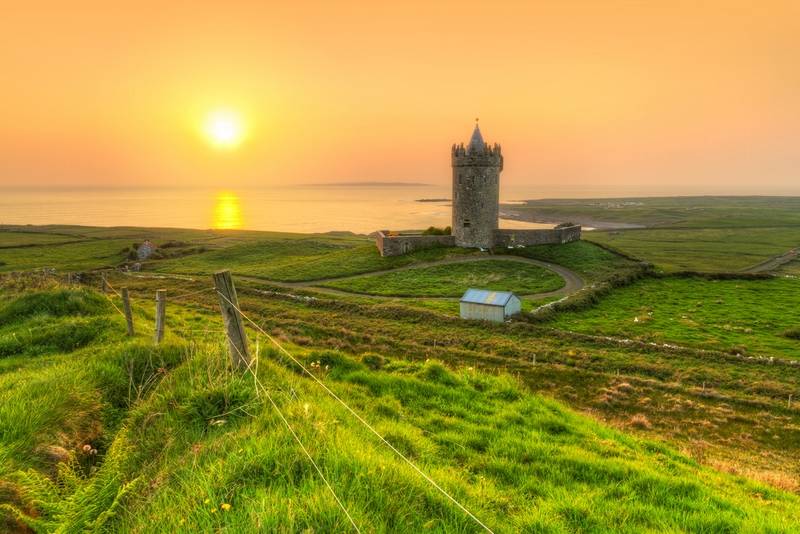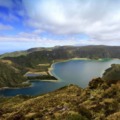Ireland, a captivating land renowned for its emerald landscapes, rich cultural heritage, and warm-hearted people, exudes an irresistible charm that transcends its small size. Nestled in the heart of Europe, this island nation boasts a tapestry of rugged coastlines, verdant hillsides adorned with ancient castles, and bustling cities steeped in history. Its vibrant traditions, including captivating folk music, enthralling dance forms like Riverdance, and a deep-rooted storytelling culture, resonate throughout the country, fostering a strong sense of community and pride. Ireland’s history, marked by resilience and a quest for independence, interlaces seamlessly with its modern identity, inviting visitors to explore its timeless beauty and experience the legendary Irish hospitality that echoes across its enchanting landscape.
Dublin
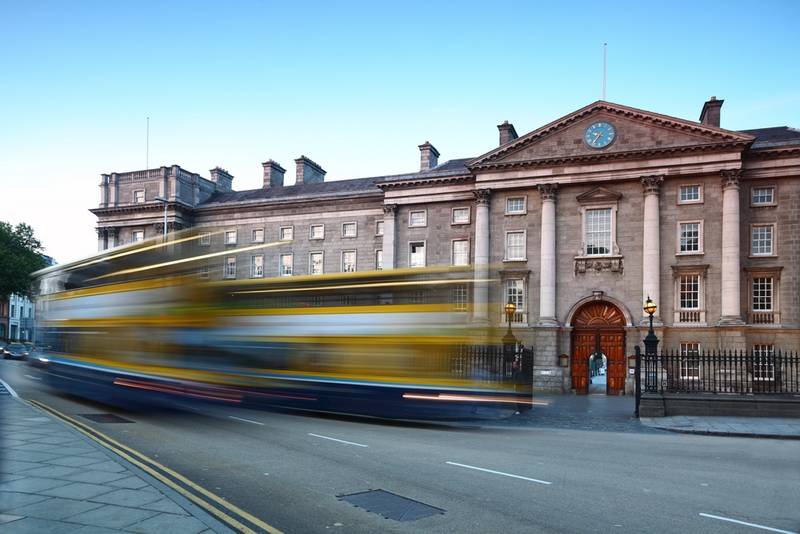
Trinity College. pavel-l-photo-and-video/shutterstock
As the capital city, Dublin weaves together a rich tapestry of culture, art, and a lively atmosphere that captivates visitors from around the world. Steeped in history, its cobblestone streets reveal tales of literary giants like James Joyce and Oscar Wilde, while the imposing Dublin Castle and stately Trinity College speak volumes about the city’s past. Yet, amidst its historical landmarks, Dublin embraces a modern energy seen in its thriving pub culture, bustling markets, and diverse culinary scene. The River Liffey, flowing through the city, acts as a vein connecting its various neighborhoods, each with its unique character and charm.
Newgrange
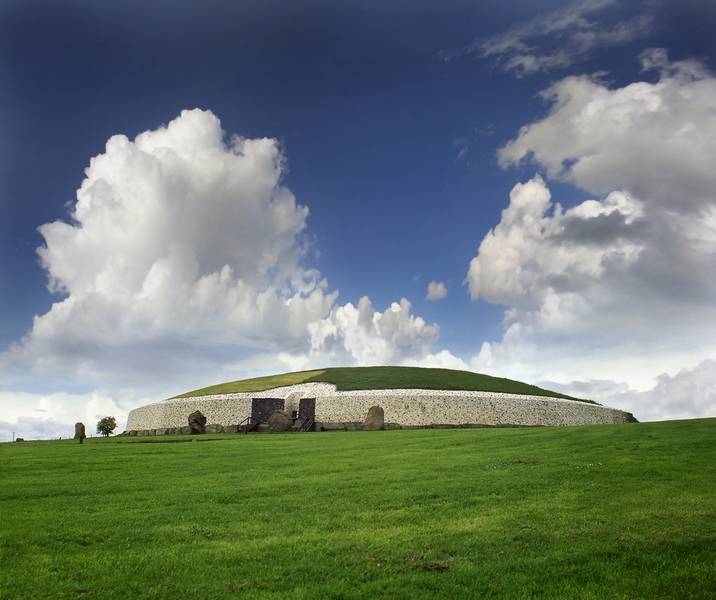
pecold/shutterstock
Newgrange, a prehistoric marvel in the Boyne Valley of Ireland, stands as a testament to ancient ingenuity and astronomical knowledge. This Neolithic passage tomb, estimated to be older than Stonehenge and the Egyptian pyramids, showcases remarkable engineering expertise aligned with the solar cycle. Constructed around 5,000 years ago, its massive stone structure houses a narrow passage leading to a central chamber adorned with intricate stone carvings. The most captivating aspect is during the winter solstice when a narrow beam of sunlight penetrates the tomb’s entrance, illuminating the inner chamber with an ethereal glow, a testament to the ancient builders’ astronomical precision and reverence for celestial phenomena.
Wicklow Way
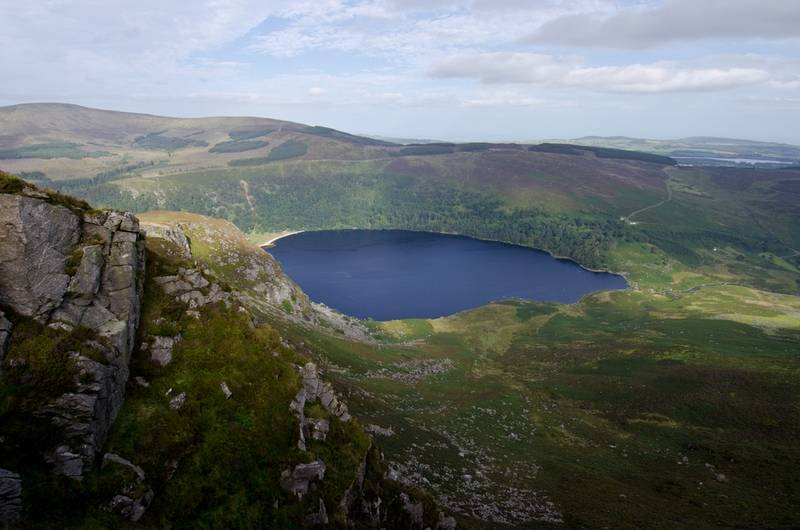
niall-dunne/shutterstock
The Wicklow Way, a captivating trail meandering through the “Garden of Ireland,” stands as a cherished gem for outdoor enthusiasts and nature lovers alike. Stretching around 129 kilometers (80 miles) from Marlay Park in Dublin to Clonegal in County Carlow, this enchanting pathway traverses diverse landscapes, including lush forests, rolling hills, serene lakes, and panoramic mountain vistas in the Wicklow Mountains National Park. As hikers follow its winding routes, they encounter ancient ruins, picturesque villages like Glendalough with its historic monastery, and an abundance of wildlife, creating an immersive experience within Ireland’s natural splendor.
The Burren
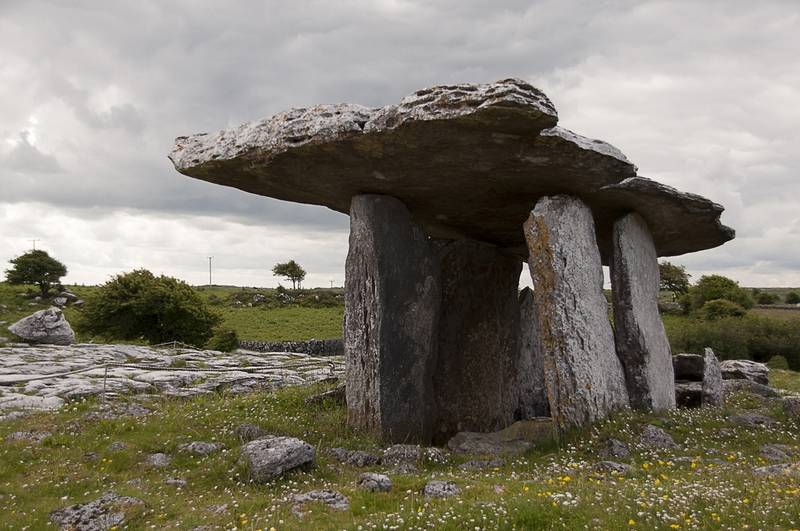
Poulnabrone dolmen tomb in the Burren. raquel-pedrosa/shutterstock
The Burren, a captivating and otherworldly landscape situated along the western coast of Ireland in County Clare, stands as a geological wonder. This unique terrain spans approximately 250 square kilometers, characterized by vast expanses of limestone pavements interspersed with cracks known as “grikes,” where an array of diverse flora, including rare alpine and Mediterranean plants, thrives in seemingly improbable conditions. The Burren’s lunar-like appearance, marked by exposed rock formations and ancient dolmens, holds an enchanting allure for adventurers and nature enthusiasts. Additionally, its coastline offers breathtaking views of the Atlantic Ocean, while its rich archaeological sites, such as the Poulnabrone Dolmen, whisper tales of ancient civilizations.
Cliffs of Moher
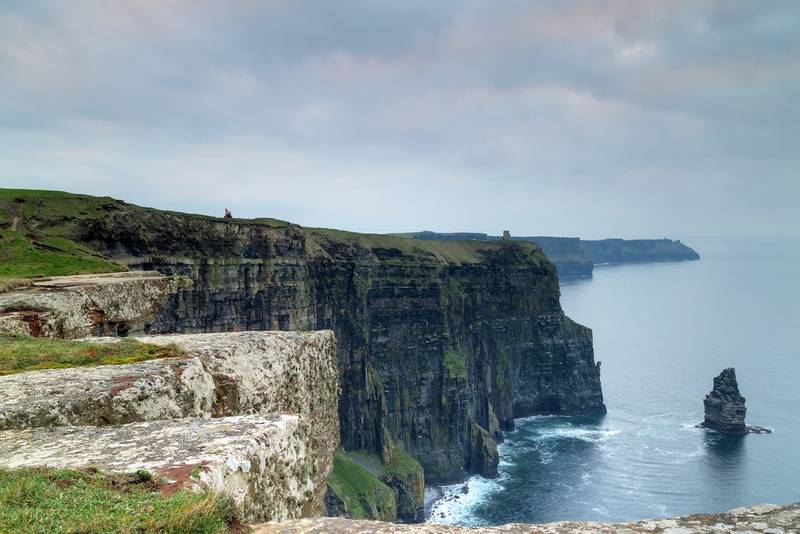
agnieszka-guzowska/shutterstock
The Cliffs of Moher, a natural wonder along the western coast of Ireland in County Clare, stand as an awe-inspiring testament to the raw power and beauty of nature. Rising dramatically to heights exceeding 200 meters (over 700 feet) above the Atlantic Ocean, these sheer cliffs offer breathtaking panoramic views that stretch for about 14 kilometers (8.7 miles). Carved by the relentless forces of wind and waves over millennia, the cliffs showcase a mesmerizing array of colors and textures, with their rugged edges and layered rock formations. Visitors are greeted with awe-inspiring vistas, where the vast expanse of the ocean meets the towering cliffs, while seabirds, including puffins and guillemots, soar above the crashing waves.
Doolin
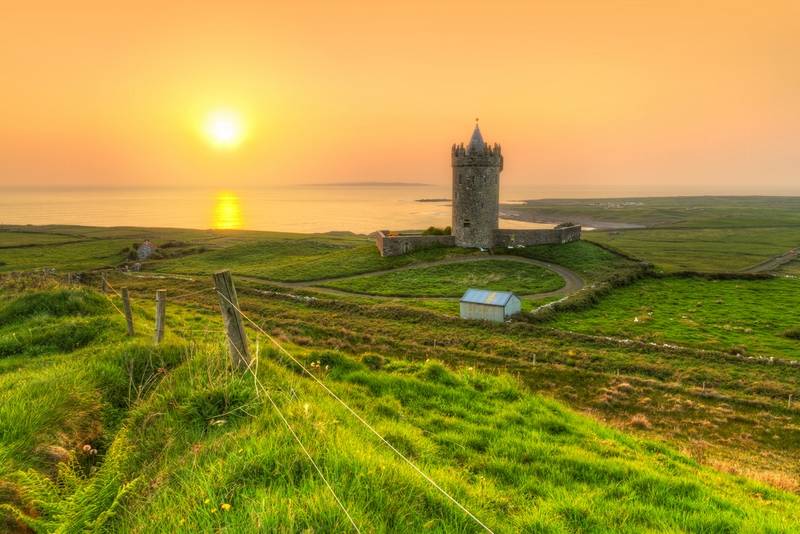
Doonagore Castle near Doolin. patryk-kosmider/shutterstock
Doolin, a charming village along the captivating west coast of Ireland in County Clare, exudes a captivating blend of scenic beauty, traditional music, and warm hospitality. Renowned as a gateway to the iconic Cliffs of Moher, Doolin is steeped in Irish culture, with its vibrant music scene drawing visitors from across the globe. The village resonates with the soulful melodies of traditional Irish music that echo from its cozy pubs, inviting both locals and travelers to revel in lively sessions filled with fiddles, tin whistles, and bodhráns. Doolin’s coastal allure extends beyond its musical heritage, offering stunning vistas of the Atlantic Ocean and opportunities for coastal walks, exploration of ancient sites like the Burren, and exhilarating boat trips to the Aran Islands.
Belfast
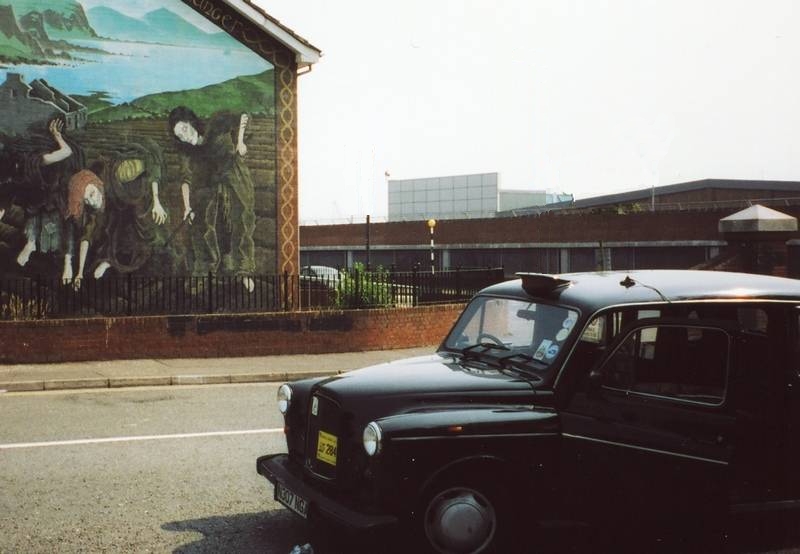
Belfast, the capital of Northern Ireland, embodies a captivating blend of history, culture, and resilience. Once marked by conflict, Belfast has transformed into a bustling city renowned for its friendly locals, burgeoning arts scene, and architectural marvels. The city bears testament to its rich history seen in landmarks like the grandeur of Belfast City Hall, the iconic Titanic Belfast museum celebrating the city’s maritime heritage, and the murals that tell stories of its past struggles and aspirations for peace. Beyond its history, Belfast has a dynamic energy evident in its thriving culinary scene, lively pubs hosting traditional music sessions, and a diverse array of festivals and events.
Giant’s Causeway
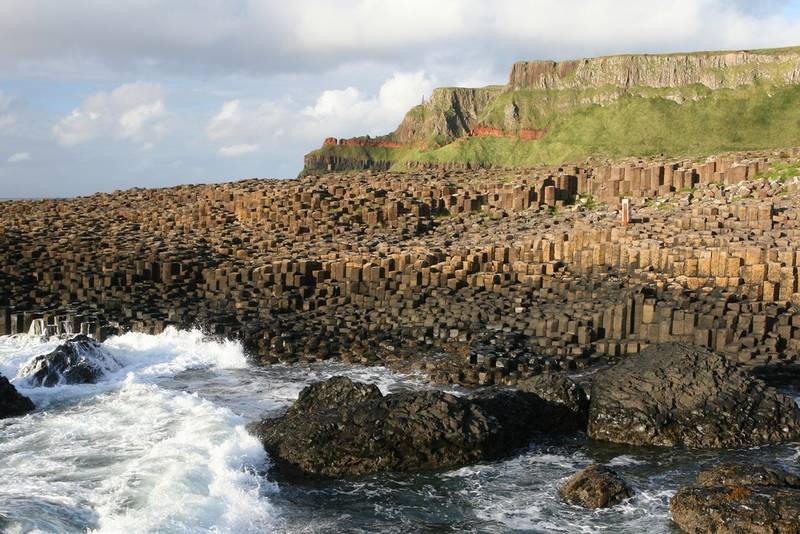
joe-gough/shutterstock
The Giant’s Causeway, a UNESCO World Heritage Site along the Northern Irish coastline in County Antrim, is a geological marvel steeped in myth and wonder. Formed over 60 million years ago by volcanic activity, the Causeway is a landscape of interlocking hexagonal basalt columns, resembling a pathway built by giants, according to local legend. These naturally occurring polygonal stones create a surreal and mesmerizing sight, extending from the cliffs into the sea. Visitors are captivated by the otherworldly formations and the unique natural beauty of the site. The rugged coastline, with its breathtaking views of the North Atlantic Ocean, adds to the enchantment of this iconic destination.
Ring of Kerry
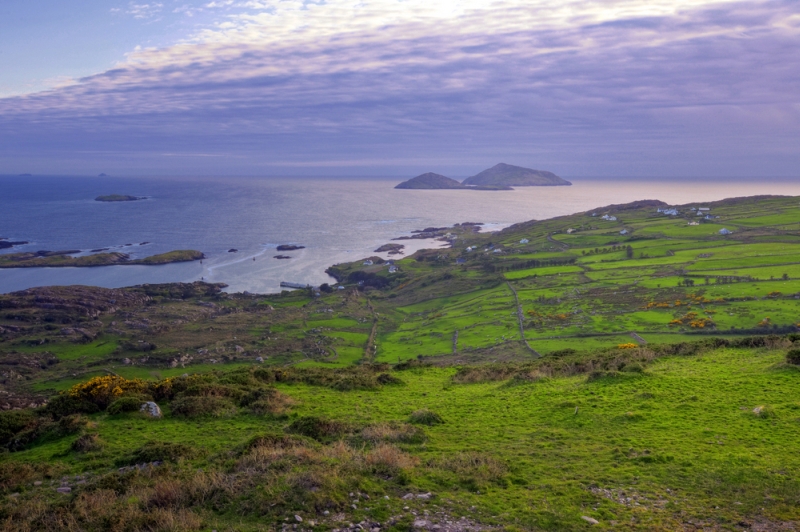
walshphotos/shutterstock
The Ring of Kerry, a scenic drive encircling the Iveragh Peninsula in County Kerry, Ireland, presents an enchanting journey through some of the country’s most breathtaking landscapes. Spanning approximately 179 kilometers (111 miles), this iconic route winds along rugged coastline, offering panoramic vistas of dramatic cliffs, pristine beaches, and charming seaside villages. Travelers embarking on the Ring of Kerry adventure are treated to a tapestry of natural beauty, from the majestic mountains of MacGillycuddy’s Reeks to the sparkling waters of the Atlantic Ocean. Along the way, picturesque stops beckon, including the historic Muckross House and Gardens, the ethereal Gap of Dunloe, and the quaint town of Killarney.
Cork City
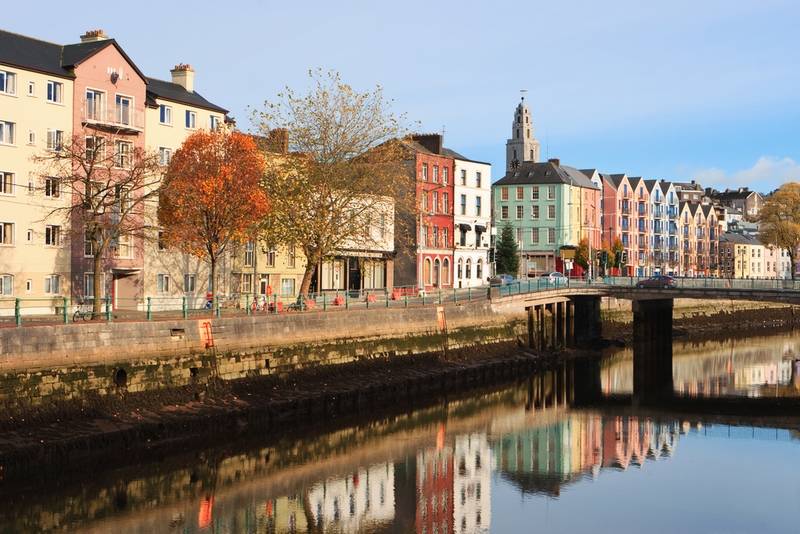
andrei-nekrossov/shutterstock
Cork City, in the south of Ireland, has a unique blend of historic charm, vibrant culture, and a thriving contemporary atmosphere. Known as the “Rebel City,” Cork is characterized by its rich history, evident in its architectural treasures like St. Fin Barre’s Cathedral, the historic English Market, and the charming alleys of Shandon. The city’s lively spirit is palpable as locals and visitors alike traverse the bustling streets filled with eclectic shops, cozy cafes, and traditional pubs hosting lively music sessions. Situated on the banks of the River Lee, Cork boasts a dynamic arts scene, vibrant festivals such as the Cork Jazz Festival, and a burgeoning culinary landscape showcasing the region’s renowned artisanal produce and delicious cuisine. Beyond the city limits, the picturesque countryside of County Cork beckons, offering visitors a chance to explore coastal beauty, historic sites like Blarney Castle, and the stunning landscapes of West Cork.
Blarney Castle
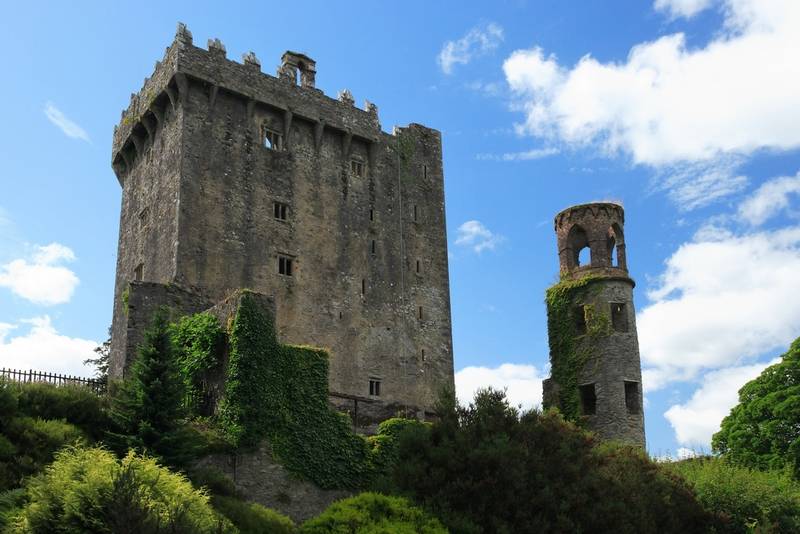
ronald-sumners/shutterstock
Blarney Castle, an iconic medieval fortress located near Cork in County Cork, Ireland, stands as a symbol of Irish heritage and folklore. Renowned worldwide for the legendary Blarney Stone, this historic site dates back over 600 years and draws visitors seeking the famous “gift of gab.” Perched atop the castle’s battlements, the Blarney Stone is believed, according to legend, to grant eloquence and persuasive skills to those who kiss it. Visitors ascend the winding stone staircase to reach the top, where they can lean backward and kiss the stone, a tradition that has endured for centuries. The castle itself, surrounded by lush gardens and picturesque landscapes, offers a glimpse into Ireland’s history, with its ancient walls, dungeons, and the magnificent view of the estate from the top.
Mizen Head
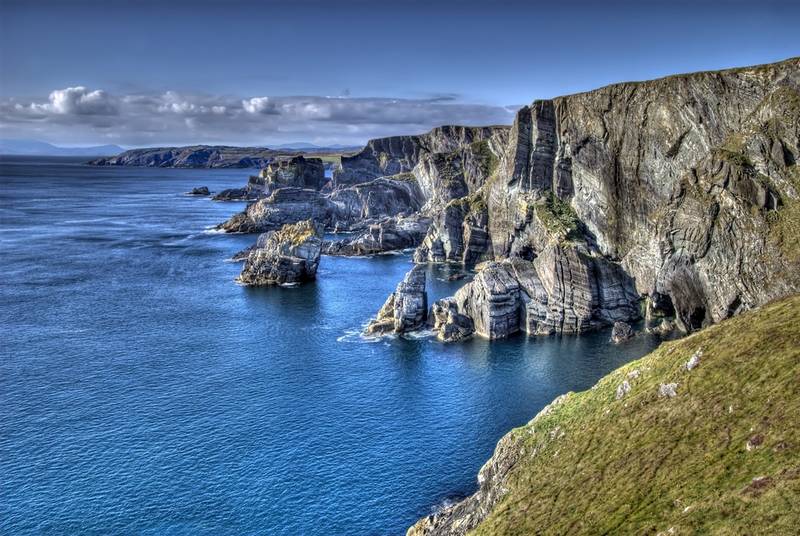
matthi/shutterstock
Mizen Head, perched on the southwestern tip of Ireland, stands as an emblematic coastal landmark renowned for its rugged beauty and historical significance. Carved by the relentless forces of the Atlantic Ocean, this majestic headland boasts dramatic cliffs that plummet into the churning waters below, offering awe-inspiring vistas of the wild, untamed seascape. Visitors are drawn to Mizen Head not only for its breathtaking natural scenery but also for its iconic lighthouse, a sentinel standing tall against the elements since 1909, guiding sailors through treacherous waters.
Dingle Peninsula
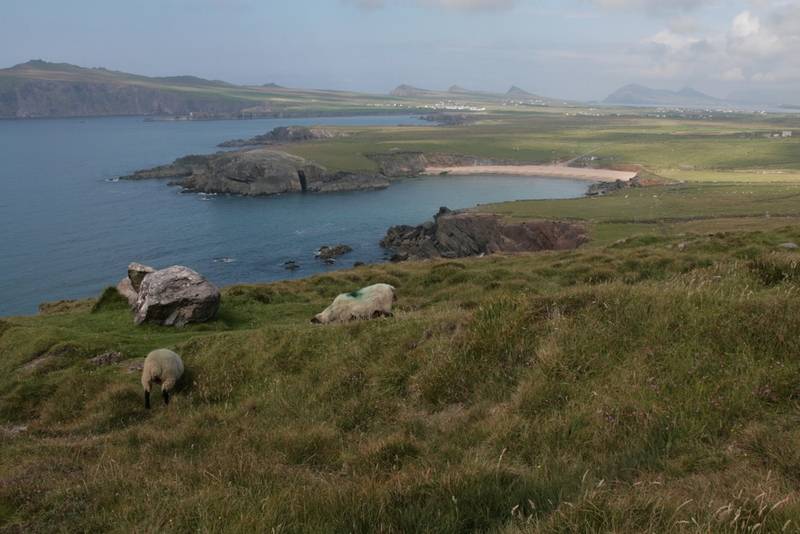
susan-drew/shutterstock
The Dingle Peninsula, situated in County Kerry on Ireland’s southwest coast, captivates with its enchanting blend of rugged landscapes, rich history, and cultural charm. Jutting out into the Atlantic Ocean, this picturesque peninsula boasts breathtaking coastal panoramas, where sheer cliffs dramatically meet the crashing waves below. Dingle Peninsula is renowned for its scenic driving routes, notably the Slea Head Drive, offering stunning vistas of ancient archaeological sites, sandy beaches, and the iconic Blasket Islands. Quaint villages like Dingle town dot the coastline, exuding a vibrant Gaelic culture showcased through traditional music, colorful houses, and friendly locals.
Rock of Cashel
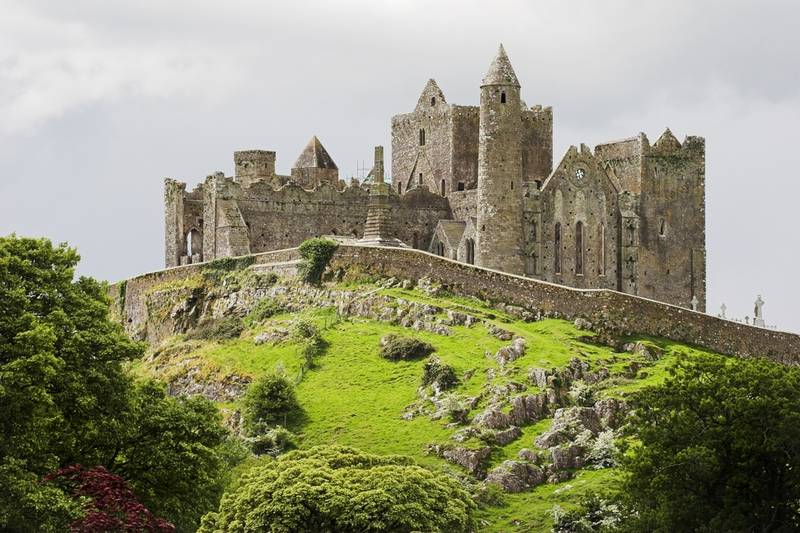
pierre-leclerc/shutterstock
The Rock of Cashel, an iconic historical site perched majestically atop a limestone hill in County Tipperary, Ireland, stands as a symbol of ancient Irish heritage and architectural grandeur. Crowned with medieval buildings, including a striking round tower, Cormac’s Chapel, and the cathedral, this imposing fortress-like complex resonates with over a thousand years of history. Steeped in myth and legend, the Rock of Cashel is said to have been the seat of the ancient kings of Munster and is also associated with the arrival of Christianity in Ireland. Visitors are transported through time as they wander the atmospheric grounds, adorned with intricate stone carvings, high crosses, and captivating views of the surrounding countryside.


